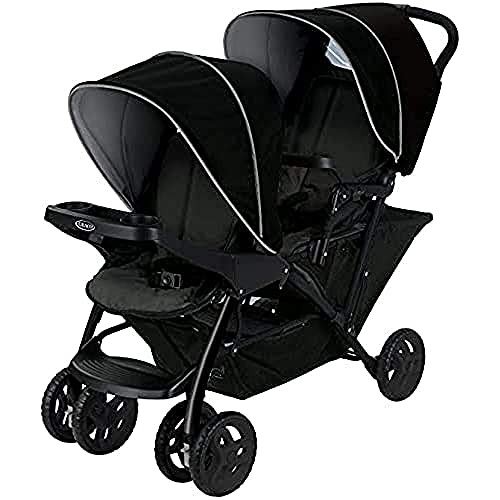20 Trailblazers Leading The Way In Prams Newborns
The Comprehensive Guide to Choosing the Right Pram for Newborns
The arrival of a newborn brings both tremendous happiness and a variety of decisions that parents should navigate. Among the crucial purchases is picking the best pram, which not only guarantees the baby's safety however likewise supplies benefit for moms and dads. This guide aims to offer an in-depth appearance into picking the appropriate pram for newborns, going over different types, features, safety factors to consider, and upkeep pointers.
Comprehending the Types of Prams
Prams differ commonly in design and performance, which can be overwhelming for new moms and dads. Here's a breakdown of the most typical types of prams available in the market:
Type of Pram
Description
Pros
Cons
Traditional Prams
Developed for infants, these prams typically have a deep bassinet.
Comfy for newborns, Safe for sleeping.
Bulky and heavy, Hard to maneuver in tight spaces.
Travel Systems
A mix of a safety seat and a stroller, allowing easy transition in between car and stroller.
Versatile and practical, Cost-effective.
Might be much heavier than standalone strollers, Not all elements are ideal for newborns.
Lightweight Strollers
Compact and simple to navigate, these are perfect for parents on the go.
Portable and simple to use, Generally more inexpensive.
Less cushioning, May not recline fully for newborns.
Convertible Strollers
Strollers that can adapt from a carrycot for newborns to a toddler stroller.
Multi-functional and lasting, Adjustable setups.
Can be costly, May require more maintenance.
All-Terrain Strollers
Constructed for rough terrains, these strollers typically include larger wheels.
Long lasting for outside use, Stable on various surfaces.
Heavier and bulkier, Can be hard to steer inside.
Secret Features to Consider
When selecting a pram for newborns, numerous features can substantially affect usability and security. Here are essential functions to bear in mind:
- Safety Harnesses: Look for a pram that consists of a five-point security harness to guarantee the baby stays protected while in transit.
- Reclining Seat: A totally reclining seat enables newborns to lie flat, which is necessary for their spinal column and breathing health.
- Suspension System: A great suspension system supplies a smoother trip, vital for the delicate bodies of newborns.
- Brake System: Ensure the pram has a trusted brake system to prevent accidents. Push Chair For Sale or foot brakes can be effective alternatives.
- Storage Space: Consider a pram with adequate storage area for diaper bags, shopping, or other basics.
- Weight and Foldability: Choosing a lightweight choice that folds easily is crucial for convenience, particularly for public transport.
Safety Considerations
Focusing on safety is critical when it comes to prams for newborns. Here are vital security suggestions to make sure the wellness of your baby:
- Check for Stability: Make sure the pram stays stable when fixed. A broad base can supply increased stability.
- Prevent Overloading: Only location products advised by the maker in the storage basket; excess weight can cause tipping.
- Routine Maintenance: Inspect the wheels, brakes, and harness systems consistently to ensure they function effectively.
- Buckle Up: Always use the safety belt, even for quick journeys, to prevent the baby from slipping or falling out.
- Watch for Age Recommendations: Follow the maker's guidelines relating to weight limits and age recommendations for safety.
Upkeep Tips
Looking after a pram guarantees its durability and security for your newborn. Here are vital upkeep pointers:
- Regular Cleaning: Wipe down the pram frame and wash materials according to maker directions to keep it hygienic.
- Check the Wheels: Check wheels for damage and clean them routinely to prevent blocked motion.
- Examine Folding Mechanism: Ensure the folding mechanism runs smoothly without sticking or jamming.
- Oil Moving Parts: Apply the suitable lube to moving parts to make sure peaceful and seamless operation.
- Store Properly: When not in usage, keep the pram in a dry location to avoid rust and maintain material stability.
Frequently Asked Questions (FAQs)
1. How long can a baby be in a pram?
For newborns, it is generally recommended to restrict undisturbed time in a pram to about 1-2 hours to avoid issues with development and flow.
2. Which pram is best for a newborn?
The best pram for a newborn is one that offers a completely flat recline, has a good safety belt, and satisfies current security requirements. Lots of parents prefer travel systems for their flexibility.
3. Can I utilize a stroller without a safety seat for a newborn?
It's recommended to use a stroller with a flat or near-flat recline for newborns. Some strollers are only suitable from six months and up, so inspect the manufacturer's assistance.
4. When should I switch from a pram to a stroller?
You can move from a pram to a stroller when your baby can sit up individually, generally around 6 months, but this can vary. It's constantly best to speak with the specific pram or stroller standards.
5. What is the very best way to clean my pram?
Constantly refer to the producer's instructions, but usually, you can clean up fabrics with mild soap and water and wipe down hard surface areas with disinfectant wipes.
Selecting the ideal pram for a newborn is a considerable decision that affects both the baby's convenience and the parent's way of life. By comprehending the kinds of prams available, crucial functions to consider, security techniques, and upkeep ideas, moms and dads can make informed decisions that boost their family's movement and ensure the safety of their little ones. Investing time in research study now settles in the long run for pleasurable getaways and treasured memories.
